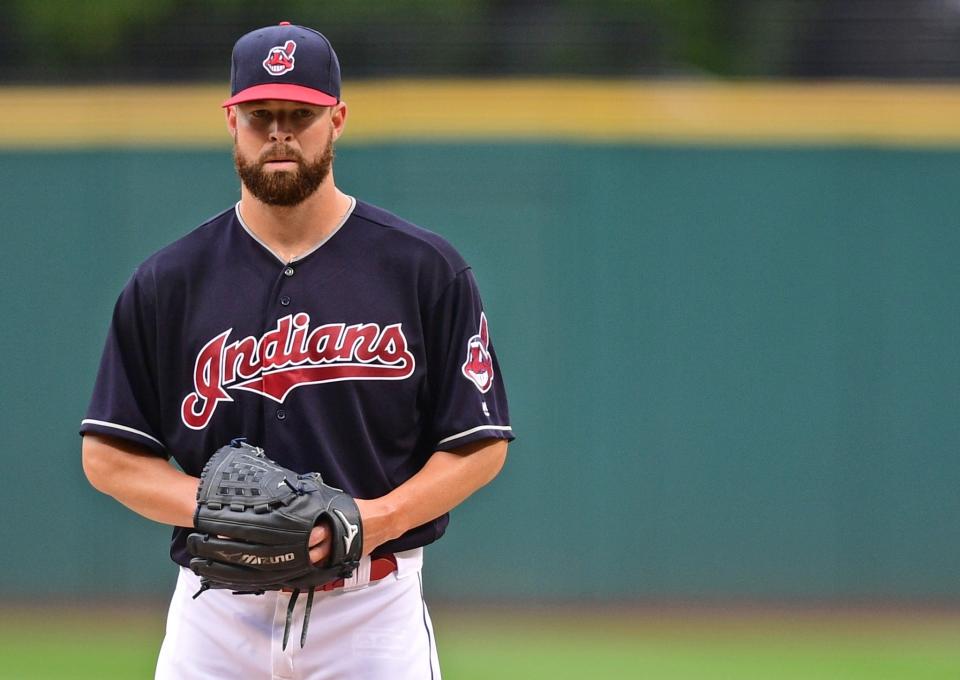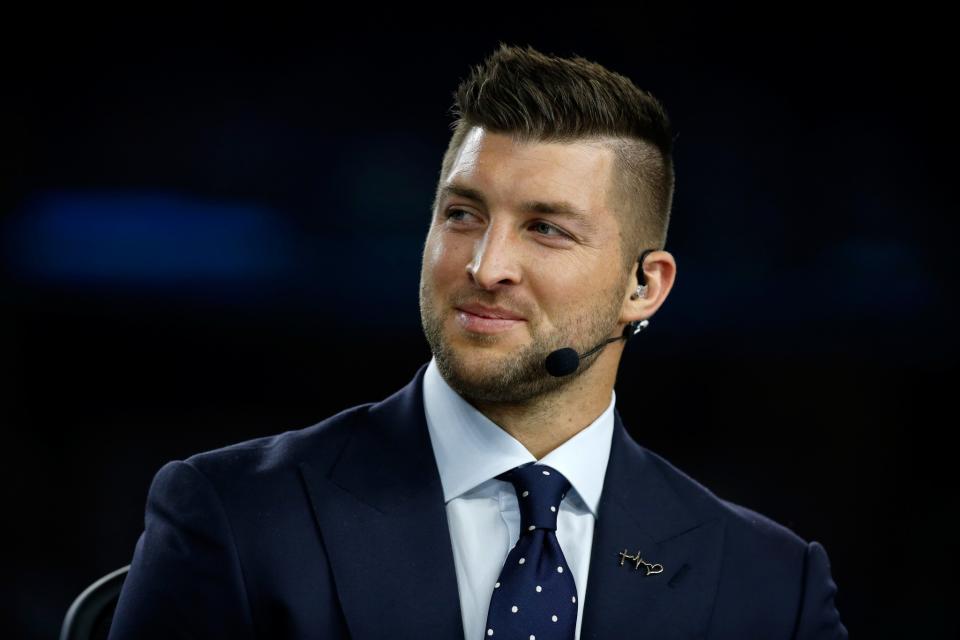How baseball's quarter-billion-dollar underdog keeps winning
LOS ANGELES – If you’d arrived at Dodger Stadium early enough Tuesday, you’d have been treated to Rich Hill and Brett Anderson, 60 or 70 paces apart, playing catch in left field.
Hill was already on the disabled list. Anderson would be in a few hours.

Behind them, in the bullpen, a tall figure with flippy hair and cut-off sleeves, that being Clayton Kershaw, measured the stability of his body over 40 pitches. He’s been on the disabled list for two months.
Going on five months into a season that probably should have been swamped by bad necks and achy elbows and sore backs and sprained thises and thats and so, so many blisters, the Dodgers nevertheless stood in first place in the NL West. The club on Tuesday sent its 27th different player to the DL, Scott Kazmir doing those honors, and here it is important to point out Kenta Maeda is the only starter to take the ball every turn, and later Tuesday he beat the San Francisco Giants and Madison Bumgarner. In January, Maeda accepted a revised contract in which financial incentives replaced guaranteed money because, yeah, he was believed by the Dodgers to be a health risk.
(The other pitcher to run into the wrong end of a Dodgers’ medical evaluation last winter was Hisashi Iwakuma, the free agent who subsequently re-signed with the Seattle Mariners and today is 13th in the American League in innings pitched and fifth in wins.)
Science can be an inexact science.
None of this would be the least bit interesting (and still might not be) if not for the fact the Dodgers are winning anyway, and have hauled down the Giants from eight games back, and seem to be feeling pretty perky about getting Kershaw back before the nights turn too cool.
So, the question is, how? Well, roster depth, for one. A decent bullpen for another. And an offense that came to life about the time Kershaw’s back locked up.
Here’s a theory kicked around in the clubhouse before Tuesday night’s game against the Giants: For three seasons, those being with Kershaw No. 1 and Zack Greinke No. 2 in a rotation that could hardly go wrong after those two, the expectation for winning outran the quest to win. Therefore, with no Greinke and then no Kershaw, and so without the security blanket of two wins out of five in the worst of weeks, the rest of the Dodgers were left to discover new ways to win.

There’s probably not a great way to measure that, as it involves human emotions and frailties, but, hey, whack 27 different guys from a roster and it makes as much sense as anything. Think of the Dodgers, and particularly their starting pitching plans, as a box of Christmas ornaments that fell from the top shelf of the closet, into the path of a walrus stampede, chased by city buses. Maybe it’s a dumbly romantic view that a bunch of players could find themselves suddenly without their most talented teammate and play better as a result. Could be a coincidence. Probably is. On the other hand, the Dodgers are getting about an hour of real pitching a week from most of their starting pitchers, and it hasn’t killed them yet.
For those who need to put a number next to all scenarios, we offer Corey Seager and Justin Turner. In the middle of their lineup the Dodgers have two guys who not only hit, but in the view of the other men in the clubhouse possess the rare gift to hit high-end pitching. That pushes an offense every night, not just when facing the threes, fours and fives. On Tuesday night it happened to be Bumgarner.
Seager’s batting average (and OPS) by month:
April: .250 (.707)
May: .301 (.892)
June: .343 (1.085)
July: .347 (.891)
August: .395 (1.054)
And, in 45 games since Kershaw went to the disabled list, Turner has a .326 batting average, 1.017 OPS, 13 home runs and 39 RBIs.
Anyway, if you’ve ever wondered what a quarter-billion-dollar underdog looks like, the Dodgers think they could be your huckleberry.
A WEEK BEHIND:
Yasiel Puig in 14 games for Oklahoma City: .396 batting average, .448 on-base percentage, seven extra-base hits (including four home runs), five walks, five strikeouts, one party bus.
And here’s the completely unrelated, unfair and gratuitous comparison: Josh Reddick in 18 games as a Dodger: .149 batting average, .208 on-base percentage, one extra-base hit (not a home run), five walks, 12 strikeouts, one room-service mishap.
Said one scout who saw a handful of Puig’s Triple-A games: “He’s hitting the ball hard. I mean, the infielders are backing up.”
A WEEK AHEAD:
Two fun series this weekend.
The first, Cleveland Indians at Texas Rangers. This may surprise you, but the Indians rake. They’ve been outscored by only the Boston Red Sox, which they’ve managed with a total of nine hits – all of them over two weeks in late April and early May – by Michael Brantley, who has endured shoulder and biceps surgeries since November. The Indians get on base, they steal bases, they hit enough home runs (Mike Napoli 29, Carlos Santana 27, Jason Kipnis 20), Jose Ramirez does crazy things in the ninth inning, Tyler Naquin is a top-five Rookie of the Year guy, and Francisco Lindor is their best player.

The matchups:
Thursday: Josh Tomlin vs. Cole Hamels
Friday: Corey Kluber vs. A.J. Griffin
Saturday: Carlos Carrasco vs. Martin Perez
Sunday: Danny Salazar vs. Derek Holland
The other, Chicago Cubs at Dodgers. The Cubs are who we thought they’d be, while the Dodgers are who we thought they’d be if they had to use, like, 140 players. Julio Urias’ past three starts: 15 innings, 16 hits, two earned runs, 12 strikeouts, two walks. He’s getting there. He’s also thrown 102 innings, majors and minors, which doesn’t sound like a lot, except he turned 20 two weeks ago. And these things make some baseball folks nervous.
The matchups (attempting to nail down Dodgers starters is a fool’s errand, but anyway):
Friday: Mike Montgomery vs. Bud Norris
Saturday: Jason Hammel vs. Anyone’s guess
Sunday: Jon Lester vs. Maeda
SAW IT COMING:
Tim Tebow, the erstwhile quarterback, has invited teams to watch him hit and throw and catch and stuff in L.A. on Tuesday, some 12 years after he gave up the sport to become a football player. He was a good football player, if not quite a good NFL player, which left him with time on his hands and, ultimately, a bat in them.
However many teams show up – 10, 15, 20, all of them – it seems most will attend the showcase/tryout out of curiosity and duty, because what’s there to lose? An hour for a scout who would’ve been in the area anyway? You go, you watch, you take notes, because what’s the worst that could happen? Nobody’s going to be running deep outs.

Unsurprising is the number of current professional players who believe this is a farce, an embarrassment to the game, and an insult to the grown men already toiling in the minor leagues for their opportunities.
To which we would suggest: If a 29-year-old man who hasn’t played baseball in a dozen seasons can take your job, either by name or game, then chances are your career was a wee bit wobbly to begin with. And if an organization is so cruel as to release a deserving player simply to sell tickets on the back of the great Tebow, then that player almost certainly is good enough to warrant signing with another organization anyway.
How many former first-rounders hang around for years based on the fact they were very good players … in high school? Plenty. The minor leagues aren’t always a merit-based system. Sometimes they’re a reputation-based system, a signing bonus-based system, a there’s-just-something-about-him-based system.
You know who that rarely applies to? The really good players. They seem to get all the breaks.
Now, let’s just see what all this Tim Tebow stuff is about.
DIDN’T SEE IT COMING:
The AL Cy Young Award is wide open, unless you actually have a responsibility to vote for it, then you might describe it as a mess.
ERA:
1. Michael Fulmer: 2.58
2. Danny Duffy: 2.66
3. Cole Hamels: 2.80
4. Jose Quintana: 2.84
5. Aaron Sanchez: 2.99
WHIP:
1. Duffy: 1.01
2. Chris Sale: 1.03
3. Justin Verlander: 1.03
4. Rick Porcello: 1.04
5. Marco Estrada: 1.04
Fangraphs WAR:
1. Corey Kluber: 4.4
2. Masahiro Tanaka: 4.2
3. Quintana: 4.1
4. Sale: 4.1
5. Verlander: 3.7
Strikeouts:
1. Chris Archer: 186
2. Verlander: 181
3. David Price: 179
4. Kluber: 171
5. Sale: 165
Strikeouts-to-walks:
1. Josh Tomlin: 5.61
2. Tanaka: 5.07
3. Duffy: 5.07
4. Porcello: 4.89
5. Price: 4.59
Innings:
1. Price: 177.2
2. Verlander: 173.1
3. Kluber: 169.2
4. Sale: 168.2
5. Porcello: 165
Wins (for the older crowd):
1. J.A. Happ: 17
2. Porcello: 17
3. Sale: 15
4. Chris Tillman: 15
5. Hisashi Iwakuma: 14
And, then, Zach Britton.


